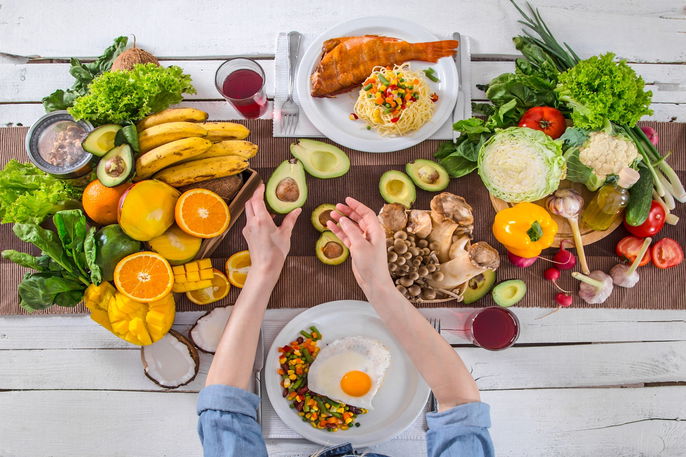A high blood pressure diet highlights the importance of natural foods, like fruits, vegetables, whole grains, nuts, dairy and legumes. These foods are rich in fiber, minerals (like calcium and potassium) and antioxidants, which are nutrients that improve blood circulation to help lower blood pressure.
With this diet, you should reduce your intake of processed foods, like soda and fast food, and food with saturated fat (like red meat, sausage and bacon). These foods tend to have higher levels of sodium and lead to the formation of fatty plaques in the arteries, leading to increased blood pressure.
Hypertension, also known as high blood pressure, occurs when blood has difficulty circulating in the blood vessels, which requires the heart to contract with more force. Overtime, this can lead to complications like arrhythmias, heart attack and renal failure.

Food to eat
The food you should prioritize in a hypertension diet are those that rich in fiber, minerals (like calcium, magnesium and potassium), healthy fats and antioxidants. Examples include:
- Low fat, no-sugar dairy, like skim milk, fat-free yogurt, ricotta cheese, and cottage cheese
- Fresh fruit, like grapes, tangerines, avocado, strawberries, cherries, watermelon, bananas, oranges and pear
- Whole grains, like whole wheat rice, whole wheat pasta, whole wheat bread and oats
- Vegetables, like pumpkin, cucumber, tomato, onions, garlic, peppers, yams and sweet potato
- Leafy greens, like broccoli, watercress, arugula, lettuce, cabbage and radish
- Legumes, like beans, chickpeas, lentils and lupini beans
- Low-fat protein, like tofu, fish, chicken, turkey and eggs
In addition, some foods, like olive oil, pumpkin seeds, flaxseeds and Brazilian nuts are high in healthy fats, and contain anti-imflammatory and antioxidant properties that improve blood circulation.
Some teas, like ginger, green, hibiscus and valerian teas contain diuretic, antioxidant and soothing properties that can also help to manage blood pressure. Check out other home remedies for high blood pressure that can naturally lower blood pressure when used with medical treatment.
Foods to avoid
Foods to avoid in a high blood pressure diet are those that are high in saturated fat (like whole milk and fatty cuts of meat), sugar and salt, such as:
- Cold cuts and sausages, like prosciutto, hot dogs, salami and bacon
- Canned food, like tuna, corn, olives, peas, pickles and sardines
- Sauces or ready-made seasoning, like ketchup, soy sauce, worcestershire sauce, mayonnaise, salad dressing and mustard
- Fatty foods, like pizza, hamburgers, cookies and fried food
- Fatty cuts of meat, like rump steak, brisket, flank steak, and ribs
- Alcoholic drinks, like beer, wine and champagne
- Sugary foods, like soda, juice boxes, chocolate milk, cake, ice cream and jellies
It is also important to avoid high-fat dairy products, like whole milk, whole milk yogurt, parmesan, cheddar, provolone and swiss cheeses. These foods tend to promote weight gain and the accumulation of fatty plaques along the arteries, which can impede circulation and lead to increased blood pressure.
To treat high blood pressure, you should avoid adding salt to your meals and opt, instead, for aromatic herbs and spices, like garlic, onion, parsley, curry, turmeric, rosemary, oregano and basil.
Meal plan for high blood pressure
The following table outlines a 3-day meal plan for managing high blood pressure:
This meal plan is just an outline and can vary from person to person depending on healthy status, current weight and age. Therefore, you are advised to consult a registered dietitian to devise a meal plan that best suits your health necessities and goals.
Regular physical activity also plays a role in blood pressure management. Patients with hypertension are advised to exercise, walk, cycle or dance at least 3 times per week to prevent weight gain, promote weight loss and improve blood circulation. You should also take your blood pressure medication are prescribed by your doctor.






























